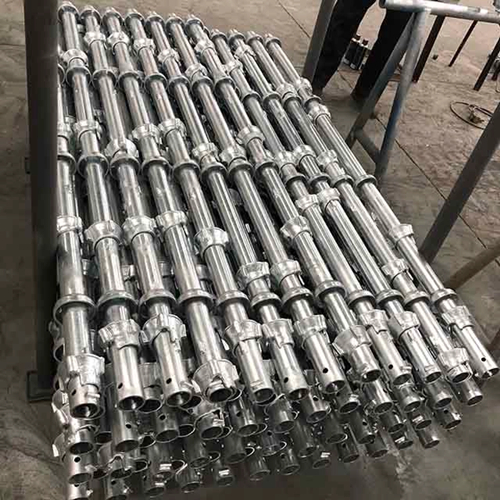How Does the Quality of Raw Materials Affect the Lifespan of Cuplock Scaffolding?
Steel Quality
Strength and Durability
High-quality steel with appropriate tensile strength and yield strength is essential. For cuplock scaffolding, the steel should be able to withstand the loads imposed during construction. If the steel is of low quality and has insufficient strength, it may deform or even break under the weight of workers and construction materials. For example, scaffolding made from high - strength structural steel (such as ASTM A500 grade B in the United States) can better handle heavy loads compared to a lower - grade steel. The better the strength characteristics of the steel, the more likely the scaffolding will maintain its structural integrity over time, thus prolonging its lifespan.
The ductility of the steel is also important. Ductile steel can absorb energy and deform without fracturing. In the case of an accidental overload or impact (such as a tool falling on the scaffolding), ductile steel can better withstand such incidents, reducing the risk of sudden structural failure and increasing the overall lifespan of the scaffolding.
Corrosion Resistance
The presence of alloying elements in the steel can significantly affect its corrosion resistance. For example, stainless steel, which contains chromium and other alloying elements, forms a passive oxide film on its surface that protects it from corrosion. However, in most cuplock scaffolding, carbon steel is often used, and in such cases, the use of galvanized coatings becomes crucial. Hot-dip galvanized steel has a thick layer of zinc that acts as a sacrificial anode. When exposed to moisture or corrosive substances, the zinc corrodes first, protecting the underlying steel. If the raw steel is not properly galvanized or if the galvanizing process is of poor quality, the scaffolding will be more vulnerable to rust and corrosion. Corrosion can weaken the structural components of the scaffolding, leading to a shorter lifespan.
Joint and Connector Materials
Cuplock Joints
The material and quality of the cuplock joints are vital. These joints are usually made of cast iron or high - strength steel. High - quality cast iron joints have good wear resistance and can withstand repeated insertions and removals of the horizontal members. If the joint material is of low quality, it may wear out quickly, leading to a loose fit between the vertical and horizontal members. A loose joint reduces the stability of the scaffolding and can accelerate the degradation of other components due to abnormal stress distributions.
The precision of the joint manufacturing also matters. If the dimensions of the cuplock joints are not accurate, it can affect the proper locking and connection of the scaffolding. This can lead to safety hazards and premature wear and tear, shortening the lifespan of the scaffolding.
Fasteners and Pins
In addition to the cuplock joints, other fasteners and pins used in the scaffolding (such as the pins that secure the horizontal members) should be of good quality. High-quality fasteners are made of corrosion - resistant materials like stainless steel or galvanized steel. If these fasteners rust or become damaged, they may not hold the components together properly, increasing the risk of the scaffolding collapsing and reducing its useful life.
Surface Coating Materials
Paint and Anti-Corrosion Coatings
The quality of the paint or other anti-corrosion coatings applied to the scaffolding can have a significant impact. High - quality, durable paints can protect the steel from UV radiation, moisture, and chemicals. For example, epoxy-based paints have excellent adhesion and corrosion - resistance properties. If the paint is of poor quality or applied in an improper thickness, it may peel off or crack over time, exposing the underlying steel to the elements and accelerating corrosion.
Some advanced anti-corrosion coatings, such as zinc-rich primers, can provide additional protection. These coatings can act as a barrier against corrosive substances and can also provide cathodic protection to the steel. The choice and quality of these coatings play an important role in determining the lifespan of the cuplock scaffolding by preventing or slowing down the corrosion process.

评论
发表评论